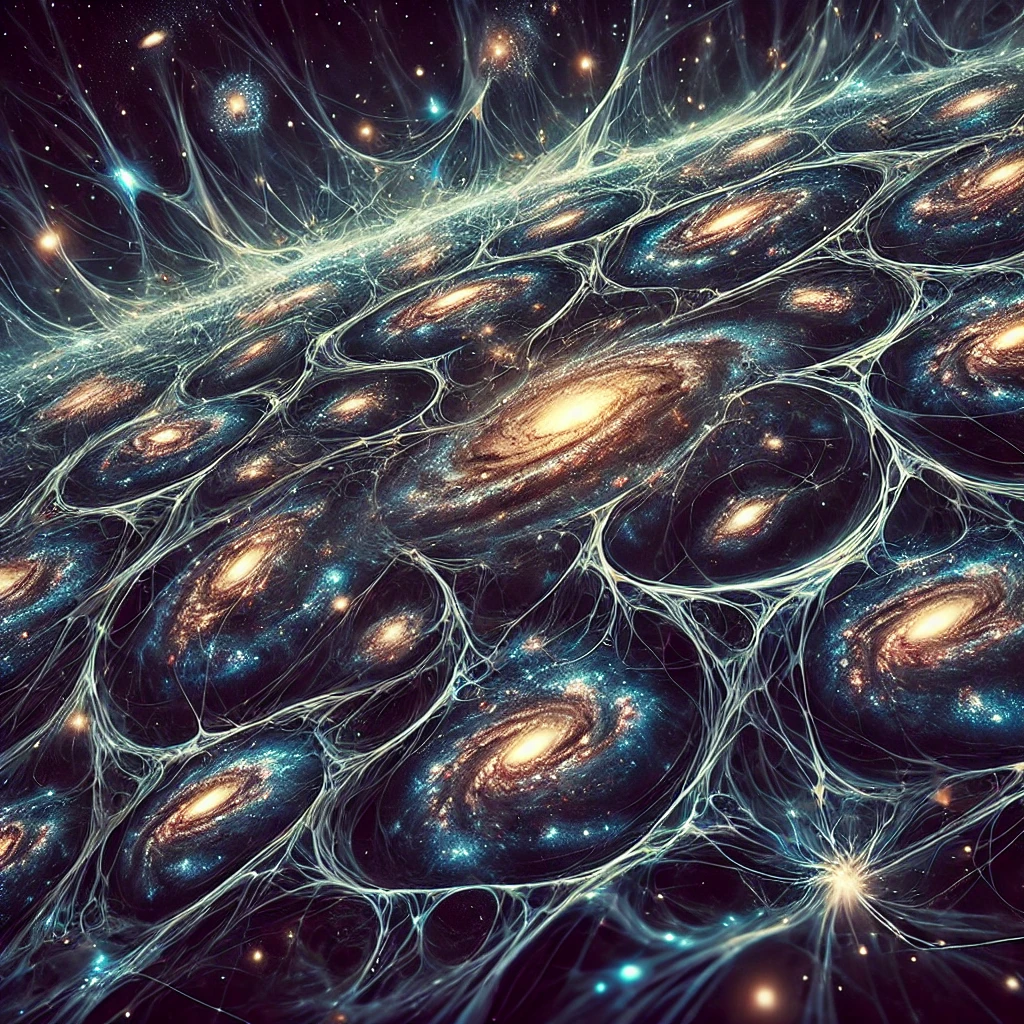What is the role of the unseen matter in the universe?
Article Source: Dark Matter in the Universe

Why You Should Care
Dark matter is a mysterious substance that makes up about 85% of the matter in the universe, yet we can't see or touch it. Understanding dark matter is key to figuring out how galaxies form, how the universe evolved, and what the future might hold. Knowing more about this invisible force could answer some of the biggest questions in science.
Answering the Question… What is the role of the unseen matter in the universe?
Dark matter acts as the invisible glue holding galaxies together. The study found that without dark matter, galaxies would fly apart because there wouldn't be enough visible matter to create the gravity needed to keep them intact. Dark matter is also crucial in the formation of galaxies and large-scale structures in the universe. The research showed that dark matter outweighs normal matter by a ratio of 5:1, meaning it has a massive impact on the universe’s structure.
How Was the Study Done?
Researchers used observations from telescopes, computer simulations, and measurements of the cosmic microwave background (the afterglow of the Big Bang) to study the effects of dark matter. They analyzed how galaxies rotate, how they cluster together, and how light bends around them to infer the presence and distribution of dark matter.
What Was Discovered?
- Massive Influence: The study confirmed that dark matter comprises about 27% of the universe's total mass-energy content, dwarfing the mere 5% made up by ordinary matter like stars, planets, and living beings. This makes dark matter the dominant form of matter in the cosmos, dictating the gravitational forces that shape the universe.
- Galaxy Formation: Dark matter's gravitational pull is critical in forming galaxies. The study found that without dark matter, the gas and dust needed to form galaxies would not come together effectively. Dark matter acts as a "scaffold," pulling matter into the dense regions where galaxies and stars form. The presence of dark matter allows galaxies to form and remain stable over billions of years.
- Gravitational Lensing: One of the most compelling pieces of evidence for dark matter is its effect on light from distant galaxies. The study highlighted that dark matter causes "gravitational lensing," where light bends as it passes through dark matter's gravitational field. This bending can be observed and measured, providing a map of dark matter's distribution across the universe. These observations have shown that dark matter is not evenly spread out but concentrated in certain areas, especially around galaxies and clusters of galaxies.
- Cosmic Structure: The study emphasized that dark matter is essential for the formation of the "cosmic web," a vast network of galaxy clusters and voids that constitute the large-scale structure of the universe. Dark matter’s gravitational influence causes galaxies to form along these web-like structures, creating the complex patterns we observe in the universe. Without dark matter, the universe would lack this intricate structure, leading to a much less organized cosmos.
- Rotational Curves of Galaxies: The study also discussed how the rotational speeds of galaxies provide strong evidence for dark matter. Observations show that galaxies rotate at speeds that cannot be explained by the amount of visible matter alone. The outer regions of galaxies rotate just as fast as the inner regions, which contradicts the expectations if only visible matter were present. Dark matter provides the necessary gravitational pull to explain these high rotational speeds, reinforcing the idea that most of a galaxy's mass is unseen.
- Dark Matter Haloes: The research discovered that dark matter forms "haloes" around galaxies, which are much larger than the galaxies themselves. These haloes extend far beyond the visible edge of the galaxy and contain most of the galaxy's mass. For example, the Milky Way's dark matter halo is believed to be over ten times the size of the visible galaxy and contains around 90% of the galaxy’s total mass.
- Impact on Cosmic Microwave Background (CMB): The study noted that measurements of the cosmic microwave background (CMB), the afterglow of the Big Bang, are influenced by dark matter. Tiny fluctuations in the CMB's temperature correspond to the distribution of dark matter in the early universe, showing that dark matter played a crucial role in the formation of the first galaxies and stars.
Why Does It Matter?
Understanding dark matter is crucial because it affects everything from the formation of galaxies to the ultimate fate of the universe. By studying dark matter, scientists can learn more about the fundamental forces that shape our cosmos and potentially discover new physics beyond the current models. This research not only deepens our understanding of the universe but also opens the door to new discoveries in astronomy and physics.
Link to full article: Dark Matter in the Universe
